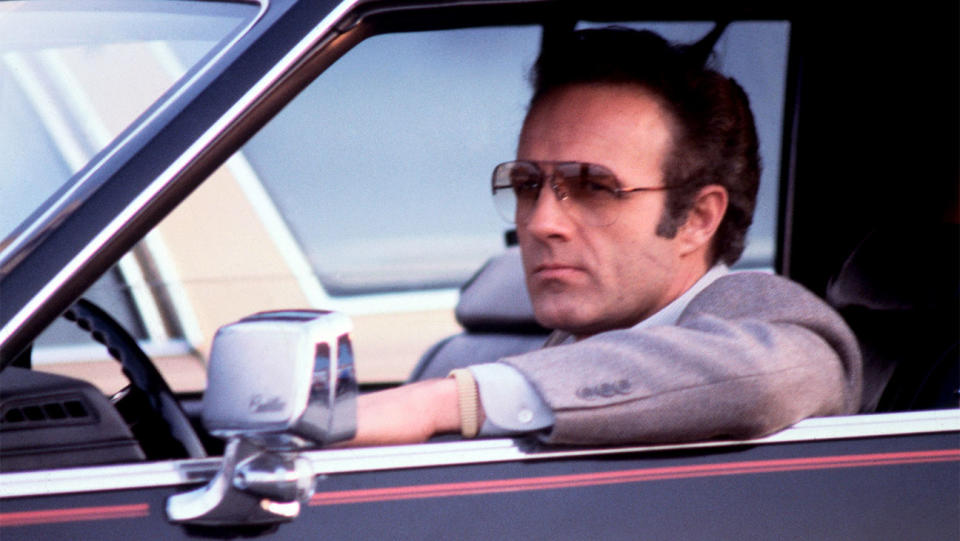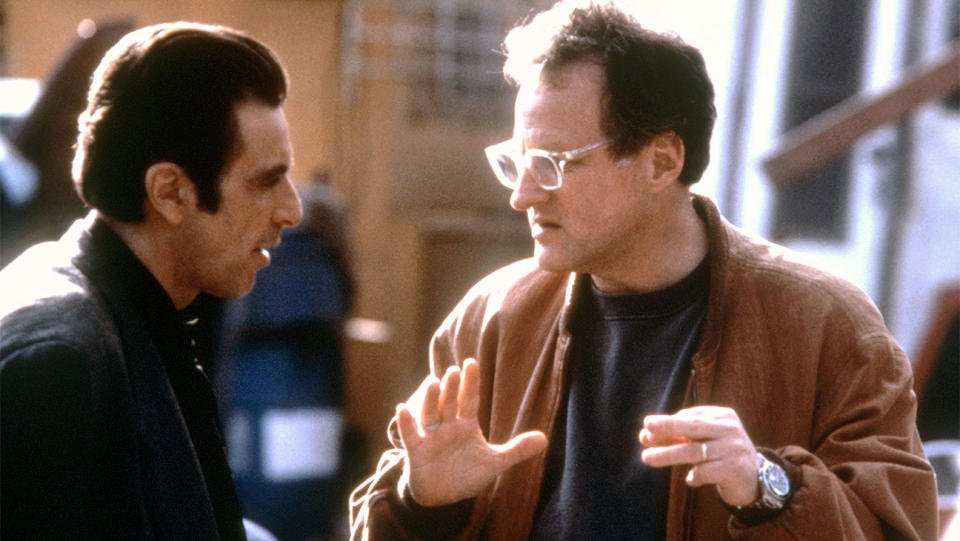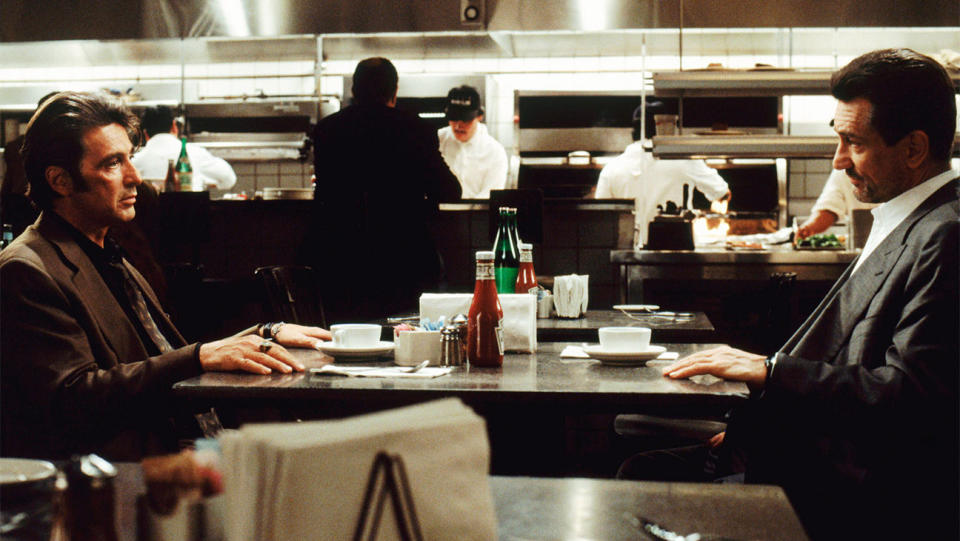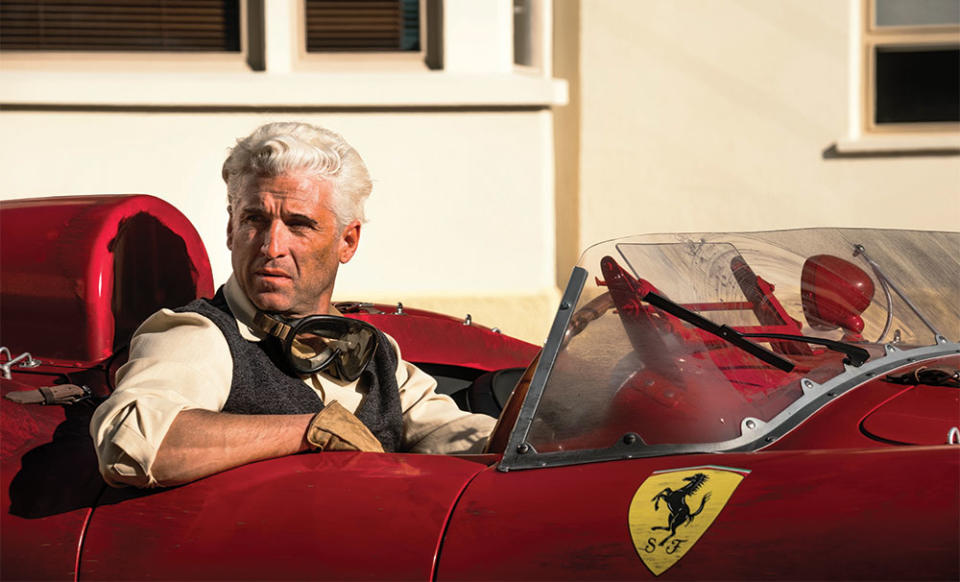How Michael Mann Changed The Visual Poetics of Cars on Film
- Oops!Something went wrong.Please try again later.
- Oops!Something went wrong.Please try again later.
- Oops!Something went wrong.Please try again later.

Starting with 1981’s Thief — the opening moments of which feature James Caan’s tough guy ex-con Frank driving a Cadillac Eldorado through the rain-soaked Chicago streets at night — cars have always played an indelible role in Michael Mann’s films, establishing the tone and acting as framing devices for his characters and a way into their psyche.
In an interview with The Hollywood Reporter, Mann spoke about the prominent role that cars have played in his movies over his four-decade career. The reason? “It’s not cars because I like cars,” he notes. It’s about adding a certain subtext to a character’s motivation and Mann’s influence — the way he literally changed the visual poetics of cars on film — dates back to Thief, his first feature.
More from The Hollywood Reporter
Built to Be Crashed: How Michael Mann's 'Ferrari' Created Its Vintage Race Cars
'Oppenheimer,' 'Killers of the Flower Moon,' 'Ferrari' Among Cinema Audio Society Award Nominees
Kaitlyn Dever Officially Cast in 'The Last of Us' Season 2 as Abby
On Thief, recalls the director, he says that he “liked the shape of the car, number one. It’s a very Italian shape and it had to be black.”
Mann says that showing Frank driving at night in his Eldorado “had to do with the fact that I want the audience to perceive — without knowing why they felt this way — that the city of Chicago was three-dimensional and he knows his way through it, like he can tunnel through it, so he’s kind of a rat in a three-dimensional maze.”
On Thief, he adds, “we wet the streets, which then became a cliché.”

No film of his though resonates more than 1995’s Heat when it comes to cars — whether it’s the acid green Peterbilt ramming an armored car, the shootout and getaway sequence in downtown Los Angeles with all the shot-up cars or the cat-and-mouse freeway scene between Robert De Niro and Al Pacino that acts as set-up to the diner meet-cute, their first ever on-screen pairing.
When asked why he chose a Cadillac STS for De Niro and an Infiniti J30 for Pacino to drive in the freeway sequence and how he used those cars to build tension in the sequence, Mann, in his still thick Chicago accent, doesn’t give details as much as he gives his emotional reasoning behind the chase. “You’re asking me, how do you make movies?” he answers. “I mean, how do you direct? I direct. I have an objective that I want to achieve and with the use of the camera and sound and music, I go and try and achieve that objective. It comes from defining exactly what the objective is. And then, my work is really toward defining exactly that. And what it is, is a very casual, ‘I want to buy a cup of coffee.’ So I ask myself, ‘What should I proceed that with?'”

Mann pauses, with a smile, and adds, “Well, I’ll proceed that with something that’s like a faux chase — a surveillance — and then, the surprise is De Niro’s got the gun under his thigh and he’s ready for confrontation, and it’s Pacino saying, ‘Come on. I’ll buy a cup of coffee.’ That’s some of the logic that goes into it — I can see the faux chase and the pursuit and pulling up next to him.”

Now 80 years old, Mann is still influencing generations of filmmakers and is back with his first feature film in eight years, Ferrari, which also happens to be his first film that revolves completely around cars. Ferrari spotlights the few short months in 1957 when Enzo Ferrari was on the brink of losing it all. The film was a monumental undertaking, requiring reproduction of the 1950s-era Ferraris and Maseratis that took part in the perilous 1,000-kilometer long Mille Miglia race in Modena, Italy.
It’s hard not to equate the director with the Ferrari brand. In 2006, Mann directed the film version of Miami Vice, with Colin Farrell playing a moody Crockett who spends large portions of the film behind the wheel of a gunmetal gray Ferrari F430 Spider, the gray always the same color as the sky. (Mann was earlier an executive producer on the original 1980s TV series, which famously had Don Johnson’s Crockett driving a Ferrari Daytona at night set to Phil Collins’ “In The Air Tonight.”)
For Mann, with Ferrari, again it’s less about the cars for cars sake and more about the emotion of what the cars — and the people who made them, who drove them, who died in them — represent.

Mann, who spent more than three decades trying to get Ferrari made, says that he was drawn in by “that story of the wonderfully irregular and asymmetrical contradictions within these people, it just felt like life. And the more specific I got into the people — and the modernistic culture — the more universal this all became. These are characters that are absolutely atypical. Our characters don’t resolve their contradictions. It just felt like this is a slice of something so real and edgy that it’s unique. That’s what kept me into it every time I opened it up.”
For all of Mann’s talking around the cars though, he does share a clear-to-this-day memory of seeing a Ferrari as a young man. “I’m standing on Brompton Road in London as a film student living on nothing and somebody drives by with this thing that looks like a museum object,” he recalls. “It’s gorgeous, it says power and it sounds a certain way and it was just transcendent. I realized it was a Ferrari. It was a 1967 275 GTB/4 cam.”
That car and what it represented, stayed with him. “The first film I ever shot, a short out of film school, was on Mike Hailwood, who was a world champion motorcycle racer at that time and he had a Ferrari 330. The first allure of them — and the first car I bought when I got my first decent paycheck, which was on Thief — was a Ferrari, a 308 GTB. I traded in my Jaguar E type for that.” Mann pauses and smiles, thinking about his past with his own cars and all the cars he’s had on screen over the years, adding, seeming lost in reverie, “You can drive Ferraris and own Ferraris, but that doesn’t mean you make a movie about Ferraris. It’s a very different thing.”
Best of The Hollywood Reporter

